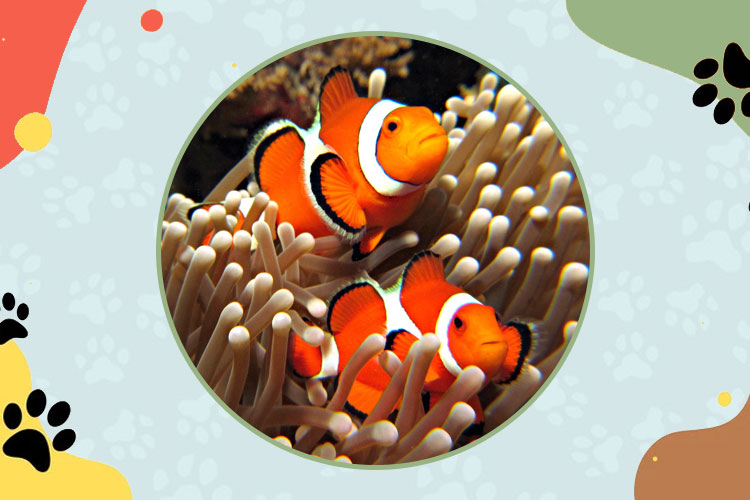Table of Contents Show
Clownfish are fascinating little creatures that capture the hearts of many, from marine biologists to casual aquarium owners. These vibrant fish, often spotted darting in and out of anemones, come in various species with unique traits. Let’s dive deep into the world of clownfish and explore their different types, habitats, behaviors, and much more.
Common Species
Amphiprioninae
The clownfish family, known as Amphiprioninae, consists of several popular species, each with its own charm and character. These fish are not just eye-catching but also have intriguing behaviors.
Amphiprion ocellaris (False Percula Clownfish)
Amphiprion ocellaris, commonly known as the False Percula Clownfish, is probably the most recognized due to its starring role in “Finding Nemo”. It has bright orange color with white bands outlined in black. They’re hardy and a great choice for beginners.
Amphiprion percula (Percula Clownfish)
Often confused with the False Percula, the Percula Clownfish has a similar appearance but can be distinguished by the thickness of its black bands. It’s also slightly more sensitive to water conditions, making it a bit trickier to care for.
Amphiprion clarkii (Clark’s Clownfish)
Clark’s Clownfish is versatile in appearance, ranging from orange to black with varying patterns of white stripes. They are one of the most widespread species and adapt well to different types of anemones.
Amphiprion melanopus (Cinnamon Clownfish)
The Cinnamon Clownfish, known as the Amphiprion melanopus, boasts a reddish-brown body with a single white stripe near its head. This species is known for its bold behavior and vibrant coloration.
Amphiprion frenatus (Tomato Clownfish)
The Tomato Clownfish, or Amphiprion frenatus, has a bright red body and usually a single white stripe near its head. They’re aggressive and territorial, so they’re best kept with hardy tank mates.
Amphiprion polymnus (Saddleback Clownfish)
Saddleback Clownfish, known scientifically as Amphiprion polymnus, are named for the distinctive saddle-like stripe on their backs. They prefer to host in sand anemones and are quite social.
Premnas biaculeatus (Maroon Clownfish)
Maroon Clownfish, or Premnas biaculeatus, is the largest of the clownfish species. It has a deep maroon body with three vertical white stripes. They are known for their feisty nature and stunning appearance.
Habitat and Distribution
Clownfish primarily inhabit tropical reefs in the Indian and Pacific Oceans. You’ll find them thriving in the warm waters of the Great Barrier Reef and other coral reefs. They prefer shallow waters where anemones are abundant, providing both food and shelter.
Symbiotic Relationships
One of the most fascinating aspects of clownfish is their symbiotic relationship with anemones. This mutualistic relationship benefits both parties—clownfish get protection from predators by hiding among the anemone’s stinging tentacles, while the anemone gets food scraps and better water circulation thanks to the clownfish’s movements.
Physical Characteristics
Clownfish are known for their bright colors and distinct stripes. These striking patterns serve as both camouflage and a deterrent to predators. They come in various sizes, usually ranging from two to five inches. Their fins and body shapes are adapted to maneuver quickly among the anemone’s tentacles.
Behavior and Ecology
Clownfish are territorial creatures with a clear social hierarchy. The largest female is the dominant one, followed by the male and then the juveniles. They exhibit fascinating breeding habits, with the male taking care of the eggs. Clownfish diet mainly consists of algae, plankton, and small invertebrates. In the wild, they can live up to six years.
Aquarium Care
Keeping clownfish in an aquarium requires specific tank conditions. They need a tank size of at least 20 gallons, with proper filtration and water conditions. Regular feeding of a balanced diet is crucial, and they generally get along with other non-aggressive fish. Breeding them in captivity can be challenging but rewarding.
Conservation and Threats
Clownfish face several threats, including habitat destruction due to overfishing and climate change. Coral bleaching, caused by rising sea temperatures, also poses a significant risk. Conservation efforts are underway to protect their natural habitats and ensure sustainable fishing practices.
Interesting Facts
Did you know clownfish can change gender? The dominant male can become female if the current female dies. They’ve also gained pop culture fame thanks to “Finding Nemo”, making them one of the most popular aquarium fish. These little fish have big personalities and fascinating behaviors that keep enthusiasts hooked.
Scientific Studies
Marine biologists conduct various studies on clownfish genetics, their ecological impact, and behavior. These studies help us understand their roles in marine ecosystems and how to protect them better.
Cultural References
Clownfish have become cultural icons, especially after the release of “Finding Nemo”. They are a staple in marine exhibits worldwide and continue to captivate audiences with their vibrant appearance and unique behaviors.
Conclusion
In conclusion, clownfish are more than just colorful fish; they are vital members of their ecosystems with fascinating behaviors and relationships. Whether you’re a marine enthusiast or a casual observer, there’s always something new to learn about these remarkable creatures.

